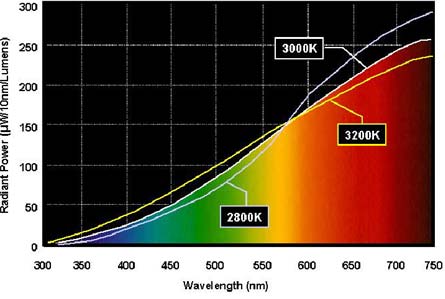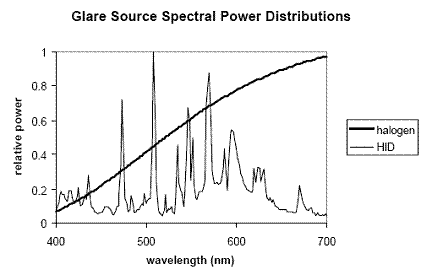Home
Introduction
Components
One
Two
 Product Product
Three
Background
Accidents
Biology of Eye
Eye Sensors
Headlights
Light Intensity
Nanotechnologies
 Liquid Crystals Liquid Crystals
 Moth-eye Gratings Moth-eye Gratings
 Photonic Crystals Photonic Crystals
Polarization
Switchable Glazings
Windshields
 Laws Laws
 Manufacturing Manufacturing
Project
Assessment
Bibliography
Glossary
Team
|
|
Headlights
Headlights are the marvelous invention that have enabled night driving and made the
road a safer place to be. However, headlights cause glare, which
can be both discomforting and dangerous. To understand the discomforting and sometimes
dangerous glare of headlights, you must first understand how a headlight
works. Below is a list of the major types of headlights currently used, and an
explanation of how they work.
Incandescent Lights
The oldest, and still rarely used, form of headlights are
conventional incandescent bulbs, which use a tungsten filament. The
air in the bulb is made up of nitrogen, argon, or krypton, which are
all inert gases to prevent the wearing of the filament. These
produce light by passing electricity through the filament, which
heats it up to high temperatures and glows, a process known as
incandescence. It emits a range of frequencies of electromagnetic
radiation, the peak being in the infrared, or hot
range. The "spectral density graph" is a smooth curve, because it is a "black body
radiator". Because the peak is in the infrared range, this bulb emits most of its
energy in the form of
heat, making it very inefficient. The average incandescent
bulb will run for only 1000 hours.
Halogen Lights
Currently the most common form of headlights are halogen bulbs. These are still
incandescent bulbs with a tungsten filament. The only difference is that the air
inside the bulb is a halogen, such as iodine or bromine. This doubles the lifespan
of the bulb to approximately 2000 hours on average, by using a specialized reaction
process that recycles the tungsten in the filament. They are
also more efficient than standard incandescent bulbs, as the peak
frequency, although still in infrared, is closer to the visible
light spectrum, allowing more of its power to be converted to
visible light.
LED Headlights
The newest form of headlights are
LED lights, so they are not yet in high-volume production. They use
several light-emitting diodes to provide a monochromatic light, in whatever color
you desire. Research is also being done on the use of white LEDs. LEDs are very
rare on the road today, as they only exist in aftermarket automotive products.
High-Intensity Discharge (Xenon) Lights
One of the newer form of headlights are HID bulbs, which use xenon. These bulbs do not
have a filament, but rather send a large amount of electricity through the gas creating an electric arc which emits the light. On the "spectral density graph",
there is a small curve resembling a black body radiator, creating the whitish light
component. However, most of the visible power is emitted along
spikes, the largest
being in the higher wavelengths (see chart: 405nm, 435nm, 475nm, 509nm,
548nm, 569nm, and 592nm). These are some of the major "spectral
lines" of the element xenon. This and other smaller spikes add to the bluish component of the light emitted.
HID lights appear as a bright bluish white. Because of their intensity, HID lights
produce the
highest amount of glare of all the headlights. In
Component One, Part Two, we reference a
research grant that is related to the glare produced by HID lights.
|
|
 Product
Product
 Liquid Crystals
Liquid Crystals Moth-eye Gratings
Moth-eye Gratings Photonic Crystals
Photonic Crystals Laws
Laws
 Manufacturing
Manufacturing

